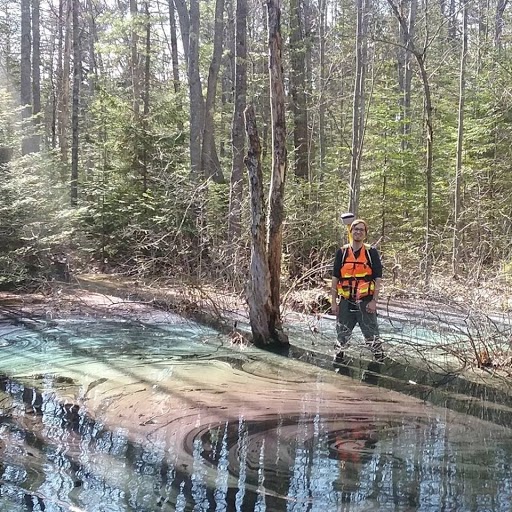
What is a Vernal Pool?
Vernal pools are temporary to semi-permanent bodies of water that fill up in the spring and typically dry out throughout the year. These habitats vary in size and landscape position and may or may not contain inlets or outlets. Amphibians, such as wood frogs, spotted salamanders, and blue-spotted salamanders, as well as fairy shrimp, are typical hallmarks of Maine vernal pools. As a result of substantially drying out in any given year, a key distinction between vernal pools and other bodies of water is that vernal pools do not support sustainable populations of predatory fish. This allows these amphibious species to flourish where they may otherwise succumb to predation.
What Changed?
On June 22nd, 2020, changes to the definition of “Water of the U.S.” (WOTUS), key terminology used in determining Army Corps of Engineers (USACE) jurisdiction over wetlands, came into effect. Previous definitions of WOTUS relied heavily on the interpretation of wetlands connected via a “significant nexus.” A broad interpretation of this term allowed the USACE to exercise jurisdiction on essentially any wetland on the landscape. The WOTUS rule changes further define which waters are jurisdictional to the USACE under the following 4 categories;
- Territorial seas, and waters which are currently used, or were used in the past, or may be susceptible to use in interstate or foreign commerce, including waters which are subject to the ebb and flow of the tide;
- Tributaries;
- Lakes and ponds, and impoundments of jurisdictional waters; and
- Adjacent wetlands.
Critical differences to WOTUS as a result of this rule change fall within categories 2 and 4. Under category 2, ephemeral streams are no longer considered WOTUS and are therefore no longer jurisdictional to the USACE. Under category 4, wetlands (including vernal pools) must be connected to or abut a WOTUS from categories 1-3 to fall under USACE jurisdiction. While the USACE continues to have latitude in how proximity to jurisdictional features is determined, USACE Jurisdictional Determinations have already been conducted on Sebago Technics projects where isolated wetlands and vernal pools were determined to lack the necessary proximity to a WOTUS to trigger USACE jurisdiction.
Recent changes further impact how the USACE exercises jurisdiction regarding vernal pools. Previously, the USACE applied a 100-foot envelope and a 100-foot to 750-foot critical terrestrial habitat around every single vernal pool on a site if any wetlands on the site are impacted. These vernal pool buffers were often the most limiting aspects of site development, as filling a single square foot of wetland on the property activated USACE vernal pool jurisdiction throughout the entire property. However, these vernal pool buffers are no longer applied when filling wetlands; USACE vernal pool jurisdiction now only triggers when a jurisdictional vernal pool itself is filled on the site, not a wetland. Further, filling a vernal pool now only applies buffers to that specific vernal pool as opposed to all vernal pools on the site.
What Does This Mean for My Project?
Filling wetlands is more forgiving than it once was, as you can now fill wetlands without triggering USACE vernal pool buffers throughout your entire site. This gives our engineers and landscape architects significant flexibility when designing your project. Now is the time to call and schedule a 2021 vernal pool survey on that property that seemed impossible to develop due to USACE vernal pool buffers!
This has been a brief introduction to the significant changes to Maine’s Army Corps Wetlands and Vernal Pool Regulations, authored by Michael Jakubowski, LSE, CSI, Environmental Scientist, Sebago Technics, Inc. If you want to learn more about Sebago Technics Environmental services, please contact Michael or our other environmental professionals at (207) 200-2100.

